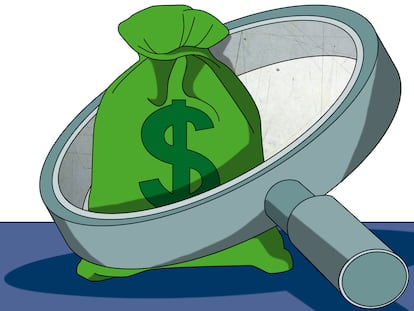Between the Great Recession and Covid: Is there a paradigm shift in the economy?
It’s unusual for the same generation to experience two major crises, but that’s what happened with the one from 2008-2012 and the one that was unleashed with the pandemic

Economic policy has undergone a major reorientation in recent years. The emergency period that we’ve gone through — first due to the pandemic and then due to the war in Ukraine — has led to extraordinary measures.
At this time, is it possible to say that we’ve entered a paradigm shift in economic policy? Reviewing our recent history can help answer this question.
It’s very unusual for the same generation to experience two major economic crises in a short period of time, thus being able to compare them. But that’s precisely what has happened to us with the 2008-2012 financial crisis and the COVID-19 pandemic, in which radically different measures were applied to deal with the fallout.
During the Great Recession, two ideas guided economic policy: “expansive austerity” and “internal devaluation.” On the one hand, cuts in investment and public spending were thought to lead to greater financial stability and, with it, a rapid recovery, while labor deregulation and salary reductions would (in theory) improve external competitiveness.
However, the joint application of these two ideas failed, leading to a lost decade. In Spain, for instance, the level of employment in 2018 still hadn’t recovered from pre-2008 levels. Cuts to wages and the welfare state generated widespread social unrest, unnecessarily prolonging the recession.
The COVID-19 crisis was faced in a diametrically opposite way. The vast majority of governments promoted a strongly expansive policy, with the aim of sustaining demand, companies and employment. At the same time, North America and the EU racked up debt to undertake ambitious economic recovery plans. Keynesian economics thus took its intellectual revenge on austerity.
In Spain — which saw a transition to a center-left government in 2018, with Prime Minister Pedro Sánchez taking office — this shift in economic policy wasn’t limited to the fiscal sphere. In labor matters — instead of accepting layoffs as an adjustment mechanism — the government opted to follow the German model, using public money to sustain at least some hours for workers. Rather than promoting a new labor reform that — like those passed in 2001, 2010 and 2012 — continued to make the firing of employees a cheaper and more flexible process, an alternative reform was chosen. The 2020 law worked to prevent job insecurity and raised the minimum wage.
This new economic policy also entered the territory of industry, leaving behind the old mantra that the best industrial policy is the one that doesn’t exist — the one driven by the market itself. Thus, through the development of strategic projects promoted by the Ministry of Industry and Tourism, the government began to support sectors with a particular capacity for innovation, transformation and modernization of the productive fabric.
Spain — as a model of Keynesian policy — has also implemented a tax reform aimed at raising the level of public income in the Spanish economy (bringing it closer to the EU average) and reinforcing social protections. During the Great Recession, many countries — Spain included — gutted benefits. However, during COVID, several countries — including Spain and Canada — offered unemployed citizens minimum living incomes. The purchasing power of pensioners was ensured, with a reorientation of the reforms towards improving social security income, rather than cutting benefits.
By the end of 2021, the global economy left the economic impact of the pandemic behind. However, the outbreak of war in Ukraine — and the consequent increase in international energy costs — once again unleashed an enormous challenge in February of 2022. It was quickly assumed that the fight against inflation couldn’t rely on monetary policy or conventional recipes. Instead, in Europe — the most affected region, given the dependence on Russian energy — the regulation of the wholesale energy market (via a cap on gas prices) made it possible to control the increase in prices that this sector passed on to the rest of the economy.
All of these new developments in economic policy — clearly Keynesian in nature — haven’t been without problems. Still, they have demonstrated notable effectiveness in meeting the planned objectives: employment took just a year-and-a-half to reach pre-pandemic levels, rather than the 10 years that it took to recover following the financial crisis. We’ve witnessed a rapid reduction in temporary employment in the Global North. Inequality in 2023 — according to the Gini index — was lower than what existed before the pandemic in many countries, while inflation was brought under control.
The differences in the management of both crises are enormous. Can we say, then, that we’re witnessing the birth of a new paradigm of economic policy? Have we left behind the neoliberal phase in the management of the economy?
It seems, rather, that we’re in a kind of interim period, in which signs of overcoming the old neoliberal economic policy coexist with unmistakable elements of orthodoxy. Few economists today would dispute the effectiveness of expansive fiscal policy in times of crisis, nor the need for an “entrepreneurial state” or for adequate tax rates to keep coffers full.
Still, at the same time, the majority of economists maintain the conviction that inflation must be controlled through a contractionary monetary policy, even at the cost of bringing the countries to the brink of recession by denying crucial public investments in the medium and long-term.
A period in which different economic policy paradigms coexist is always interesting from the point of view of intellectual discussion. But disregarding the lessons learned during these years and returning to the old certainties of neoliberal orthodoxy will be of very little help when it comes to addressing the challenges that our economies face.
Nacho Álvarez is a professor of Applied Economics at the Autonomous University of Madrid.
Sign up for our weekly newsletter to get more English-language news coverage from EL PAÍS USA Edition
Tu suscripción se está usando en otro dispositivo
¿Quieres añadir otro usuario a tu suscripción?
Si continúas leyendo en este dispositivo, no se podrá leer en el otro.
FlechaTu suscripción se está usando en otro dispositivo y solo puedes acceder a EL PAÍS desde un dispositivo a la vez.
Si quieres compartir tu cuenta, cambia tu suscripción a la modalidad Premium, así podrás añadir otro usuario. Cada uno accederá con su propia cuenta de email, lo que os permitirá personalizar vuestra experiencia en EL PAÍS.
¿Tienes una suscripción de empresa? Accede aquí para contratar más cuentas.
En el caso de no saber quién está usando tu cuenta, te recomendamos cambiar tu contraseña aquí.
Si decides continuar compartiendo tu cuenta, este mensaje se mostrará en tu dispositivo y en el de la otra persona que está usando tu cuenta de forma indefinida, afectando a tu experiencia de lectura. Puedes consultar aquí los términos y condiciones de la suscripción digital.
More information
Últimas noticias
There is as much life left to discover on planet Earth as that which is already known
Dozens presumed dead, around 100 injured in fire at Swiss Alps bar during New Year’s celebration
Is porn for women different from conventional porn? We spoke to those who make it
Cartagena de Indias is sinking: What can the city do to mitigate it?
Most viewed
- Reinhard Genzel, Nobel laureate in physics: ‘One-minute videos will never give you the truth’
- Sinaloa Cartel war is taking its toll on Los Chapitos
- David King, chemist: ‘There are scientists studying how to cool the planet; nobody should stop these experiments from happening’
- Oona Chaplin: ‘I told James Cameron that I was living in a treehouse and starting a permaculture project with a friend’
- The Interoceanic Train, the Mexican alternative to the Panama Canal











































